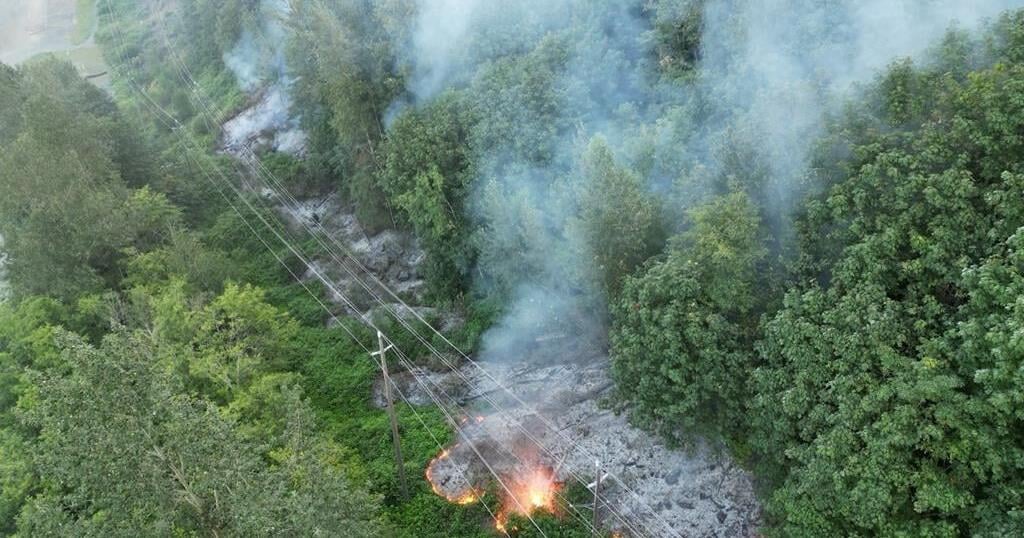The number of wildfires in British Columbia has flared as dry lightning sparked many new blazes that are feeding on dry conditions exacerbated by recent heat waves.
More than 300 wildfires are burning in the province, and more than half of those are classified as out of control.
Two fires ignited by lightning in the Regional District of Central Kootenay, the Aylwin Creek and Komonko Creek blazes near the shores of Slocan Lake, have triggered a new evacuation order for 107 properties south of Silverton, B.C.
The regional district has also issued an alert for Silverton itself, with residents told to be ready to evacuate on short notice and Highway 6 in the area closing due to the adjacent blazes.
Meanwhile, the fast-moving Shetland Creek fire burning near Spences Bridge is still of most concern, with evacuation orders and alerts popping up in Ashcroft, Cache Creek, Spences Bridge, the Ashcroft First Nation and several Cook’s Ferry Indian Band reserves.
The Thompson-Nicola Regional District emergency operations centre has confirmed a number of structures in Venables Valley, B.C., have been destroyed, but preliminary estimates put that number at less than nine as officials have not been able to enter the area to assess damage.
Heat warnings continue to cover a large section of south and eastern B.C., with Environment Canada reporting the Kelowna, Cranbrook, Vernon and Nakusp areas all broke high-temperature records on Friday with Kelowna reaching 38.6 degrees.
The BC Wildfire Service says the extreme temperatures and dry conditions have contributed to an increase in fire growth, and recent dry lightning from isolated storms has set off many of the current blazes.
The wildfire service says smoke conditions are also expected to increase, while fires burning in Alberta are expected to bring smoke into the northeastern corner of B.C.
Environment Canada has issued special statements about the wildfire smoke affecting air quality in places such as the Slocan Lake, Peace River, East Kootenay, Fort Nelson and South Thompson areas, asking residents to limit outdoor activities.
This report by The Canadian Press was first published July 20, 2024.

























